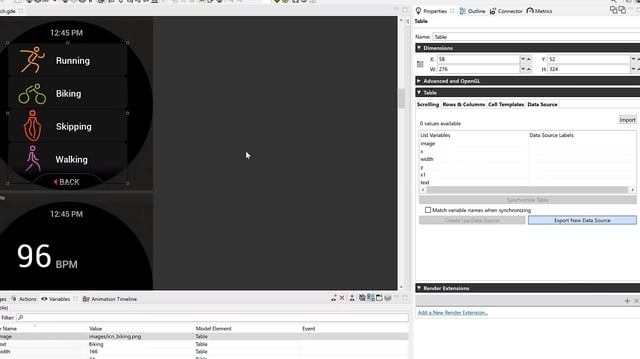With a small footprint and low-power needs, microcontrollers (MCUs) are fast becoming the preferred platform of choice for organizations developing embedded products in competitive marketplaces. Longer battery life, reduced bill-of-materials, and increasingly better performance herald MCUs as the key deciding factor to meet consumers’ needs into 2022 and beyond.
The latest release of Storyboard, is designed to make the process of developing sophisticated embedded GUI experiences for low-memory and low-power MCU devices less complicated to help you leverage the explosive growth in the MCU market:
“The global microcontroller market size is predicted to attain USD 36.16 billion by 2028. Globally, more than 28 billion units of microcontrollers were shipped in 2020. The rising need for agility and flexibility in the industrial ecosystem due to the reducing product lifecycles is expected to spur growth further.” - Global Microcontroller Market Size, Share & Trends Analysis Report, 2021-2028
Read on for an overview of the top new features.
1. Save time with ready-made GUI elements
For larger customers that scale their GUIs across brands to smaller ones that want to minimize development effort, pre-built UI components help you get started quickly on the development of GUI applications without the need to spend a ton of time coding. Since no two GUI applications are the same, the ability to modify pre-built or custom-built components makes them a valuable asset when trying to get to market on time.
Storyboard components have been updated to allow easier resizing and customization for expanded and faster reuse to support the needs of different embedded projects.
 Storyboard pre-built UI components
Storyboard pre-built UI components
2. New runtime engine optimizations for improved performance
With limited storage space and constrained processing resources, there are essentially two considerations for optimizing MCU applications: Code size and code execution times. From day one, we’ve built Storyboard to provide the best possible user experience (UX) using the least possible hardware resources and Storyboard 7.1 further refines this philosophy.
]Based on direct customer feedback, we’ve rebuilt and optimized several aspects of the Storyboard Runtime Engine. These include:
- Optimizations of the FreeType font library to reduce memory footprint and improve render performance at runtime
- New option to use pre-compiled and read-only Lua objects at runtime to reduce memory consumption for Lua scripting
3. Support for curvilinear text
With the rise in circular screens, most notably in the wearables space, and the need for more innovative GUI elements, we’ve added support for rendering text along a curved path or line. By selecting any text element and defining the curvilinear shape to follow, Storyboard will automatically render the font glyphs in the appropriate manner at runtime to follow your embedded device's beautiful, curved display.
 Using curvilinear text in Storyboard
Using curvilinear text in Storyboard
4. Intuitive visualizations of screen transitions
The more screens your GUI has, the harder it can be to understand their relative position and validate their transition behaviors. This 7.1 release gives you the capability to lay screens out in the Storyboard workspace relative to how they transition with each other.
Have a screen that transitions left or right based on button presses? You can now align that behavior with the left or right placement of the destination screens in the workspace.
 Storyboard screen layout example
Storyboard screen layout example
5. Faster table & list creation
Tables and lists sometimes have a bad reputation but they’re the most efficient method for organizing large or complex sets of information for users. Well thought-out tables and lists can boost UX significantly, while poorly designed or slow-to-respond elements will only frustrate users.
Our latest release improves the table and list creation process by allowing you to automatically create them by pointing to a data file. Once created, these elements update dynamically based on changes to the input file, so you don’t have to worry about manually rebuilding and sizing them.
By eliminating the steps and manual coding previously required to add these elements, you can focus more time on prototyping and testing design and behavior. And really, that’s what building great UX is all about.
 Storyboard table data import
Storyboard table data import
6. Enhanced export process to MCU hardware
Validation on the target hardware is an essential part of the development process, to know how the GUI application performs and whether it meets UX expectations. Knowing how resources are consumed before deployment is often a valuable time saver, as changes can be made earlier and without requiring the actual hardware.
With this release, the application export process has been streamlined to include the resource configuration parameters within a single workflow when exporting to MCU hardware.
Furthermore, as the application is passed from one team member to another during development, any confusion as to how the resources should be exported is eliminated, as these details are stored and provided within the exporting process workflow.
 Storyboard export data source selection
Storyboard export data source selection
There’s more!
For a complete list of features and updates in Storyboard version 7.1, read out our release notes.
Interested in learning more? Download our free trial now.
.png?width=180&height=67&name=Crank-AMETEK-HZ-Rev%20(4).png)



